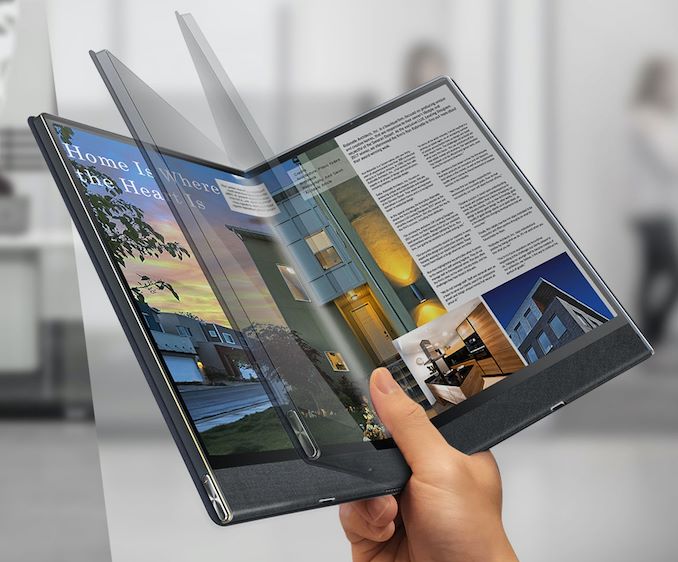Tablets have been around for more than a decade, but they have never been able to replace laptops or smartphones as the primary devices for productivity and entertainment. However, that might change soon, as foldable tablets are emerging as a new trend in the tech industry. Foldable tablets are devices that have a flexible screen that can bend, fold, or slide to transform into different shapes and sizes. They combine the best of both worlds: the portability and convenience of a smartphone, and the large screen and functionality of a tablet. In this blog, we will explore some of the benefits, challenges of foldable tablets, and why they might be the next big thing in mobile computing.
Benefits of Foldable Tablets
Foldable tablets have many advantages over traditional tablets, such as:
- Versatility: Foldable tablets can adapt to different use cases and scenarios, depending on the user’s needs and preferences. For example, a foldable tablet can be folded into a phone-like shape for making calls, texting, or browsing the web, or it can be unfolded into a tablet-like shape for watching videos, playing games, or reading books. Some foldable tablets can also slide or extend their screens to provide more viewing area or change their aspect ratio. This means that users can enjoy a variety of content and experiences on a single device, without having to switch between multiple devices or compromise on the screen size or quality.
- Productivity: Foldable tablets can also enhance the user’s productivity and efficiency, especially for work-related tasks. For instance, a foldable tablet can be used as a laptop replacement, by connecting a keyboard and a mouse, or by using a stylus or a touchpad. A foldable tablet can also support multitasking features, such as split-screen, floating windows, or drag-and-drop, allowing the user to work on multiple apps or documents at the same time. Moreover, a foldable tablet can be used as a secondary display or a monitor, by connecting it to a PC or a laptop, or by using wireless technologies, such as Miracast or Chromecast. This way, the user can extend their workspace and improve their workflow.
- Innovation: Foldable tablets are also a testament to the innovation and creativity of the tech industry, as they showcase the potential and possibilities of flexible display technology. Flexible displays are screens that can bend, fold, or roll without breaking or losing their functionality. They are made of thin and flexible materials, such as plastic, metal, or glass, and they use organic light-emitting diodes (OLEDs) or quantum dots (QLEDs) to produce high-quality images and colors. Flexible displays are not only used for foldable tablets, but also for other applications, such as smartwatches, smart clothing, smart wallpaper, or smart cars. Flexible displays are expected to revolutionize the future of display technology, as they offer more design freedom, durability, and functionality than conventional displays.

Challenges of Foldable Tablets
Despite their benefits, foldable tablets also face some challenges and limitations, such as:
- Cost: Foldable tablets are still very expensive, compared to traditional tablets or smartphones. This is because foldable tablets require more advanced and complex components, such as flexible displays, hinges, batteries, and sensors, which are not widely available or mass-produced yet. For example, the Samsung Galaxy Z Fold 5, one of the most popular foldable tablets in the market, costs $1,920, which is more than twice the price of the Samsung Galaxy Tab S9, a regular tablet from the same company. The high cost of foldable tablets makes them less affordable and accessible for the average consumer, and limits their adoption and popularity.
- Durability: Foldable tablets are also more prone to damage and wear and tear, due to their folding mechanism and design. For example, foldable tablets can develop creases, cracks, or scratches on their screens, especially at the folding point, after repeated use. Foldable tablets can also suffer from hinge issues, such as loosening, creaking, or breaking, which can affect the stability and functionality of the device. Furthermore, foldable tablets are more vulnerable to dust, water, or other environmental factors, which can enter the gaps or the edges of the device and cause malfunctions or defects. Therefore, foldable tablets require more care and maintenance than traditional tablets, and they may not last as long or have as good a warranty as regular tablets.
- Compatibility: Foldable tablets also have some compatibility issues, both in terms of hardware and software. For hardware, foldable tablets may not be compatible with some accessories or peripherals, such as cases, covers, chargers, or docks, which are designed for regular tablets or smartphones. For software, foldable tablets may not be compatible with some apps or content, which are not optimized or adapted for flexible displays or different screen sizes or aspect ratios. For example, some apps or content may not scale properly, or may have distorted or cropped images or text, when displayed on a foldable tablet. This can affect the user experience and satisfaction, and reduce the functionality and usability of the device.
Conclusion
Foldable tablets are a new and exciting trend in the tech industry, as they offer a unique and innovative way of using mobile devices. Foldable tablets have many benefits, such as versatility, productivity, and innovation, but they also have some challenges, such as cost, durability, and compatibility. Foldable tablets are still in their early stages of development and adoption, and they may not be suitable or appealing for everyone. However, foldable tablets have the potential to become the next big thing in mobile computing, as they provide a new and improved user experience and functionality. Foldable tablets are definitely worth watching out for, as they could change the way we use and interact with our devices in the future.

